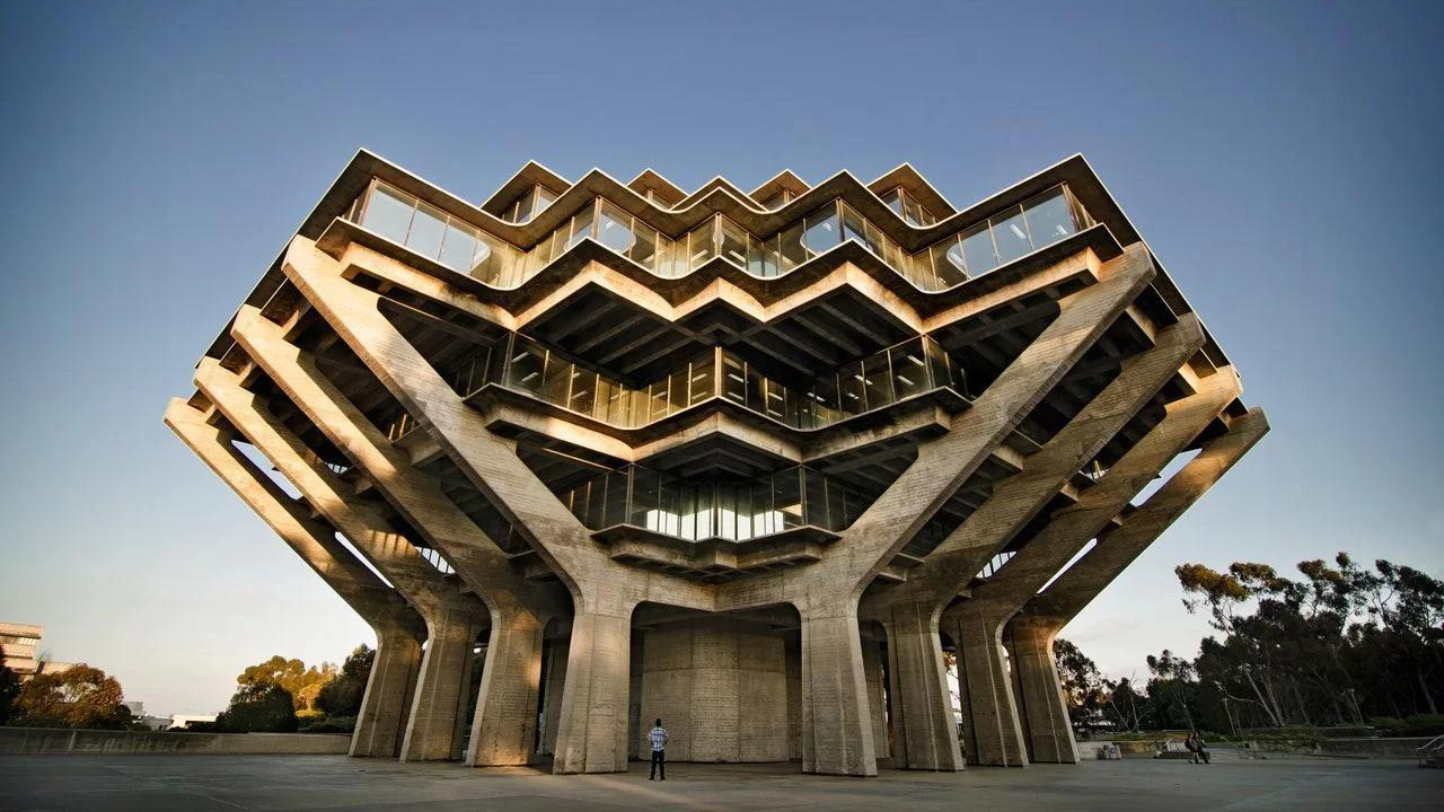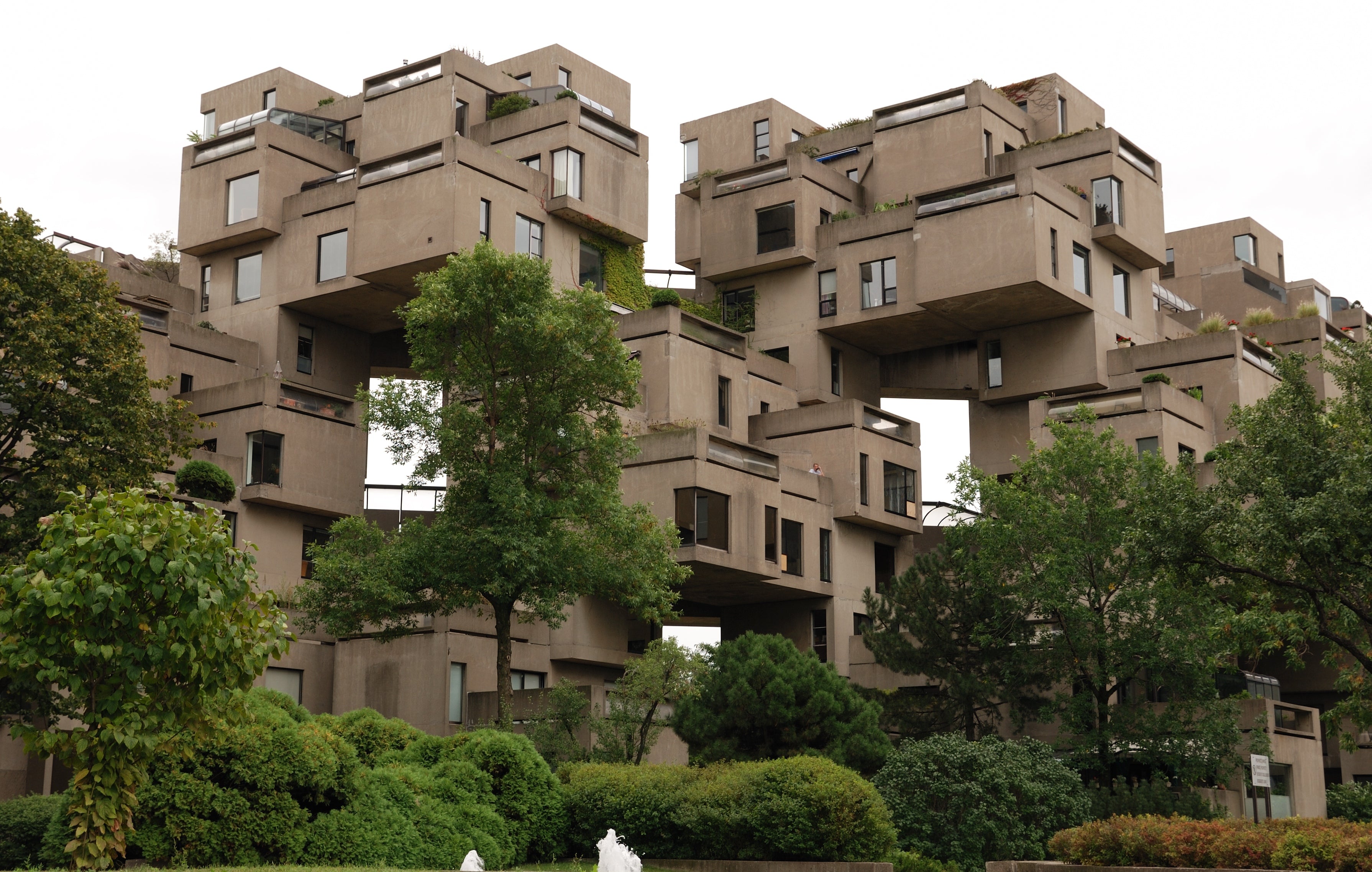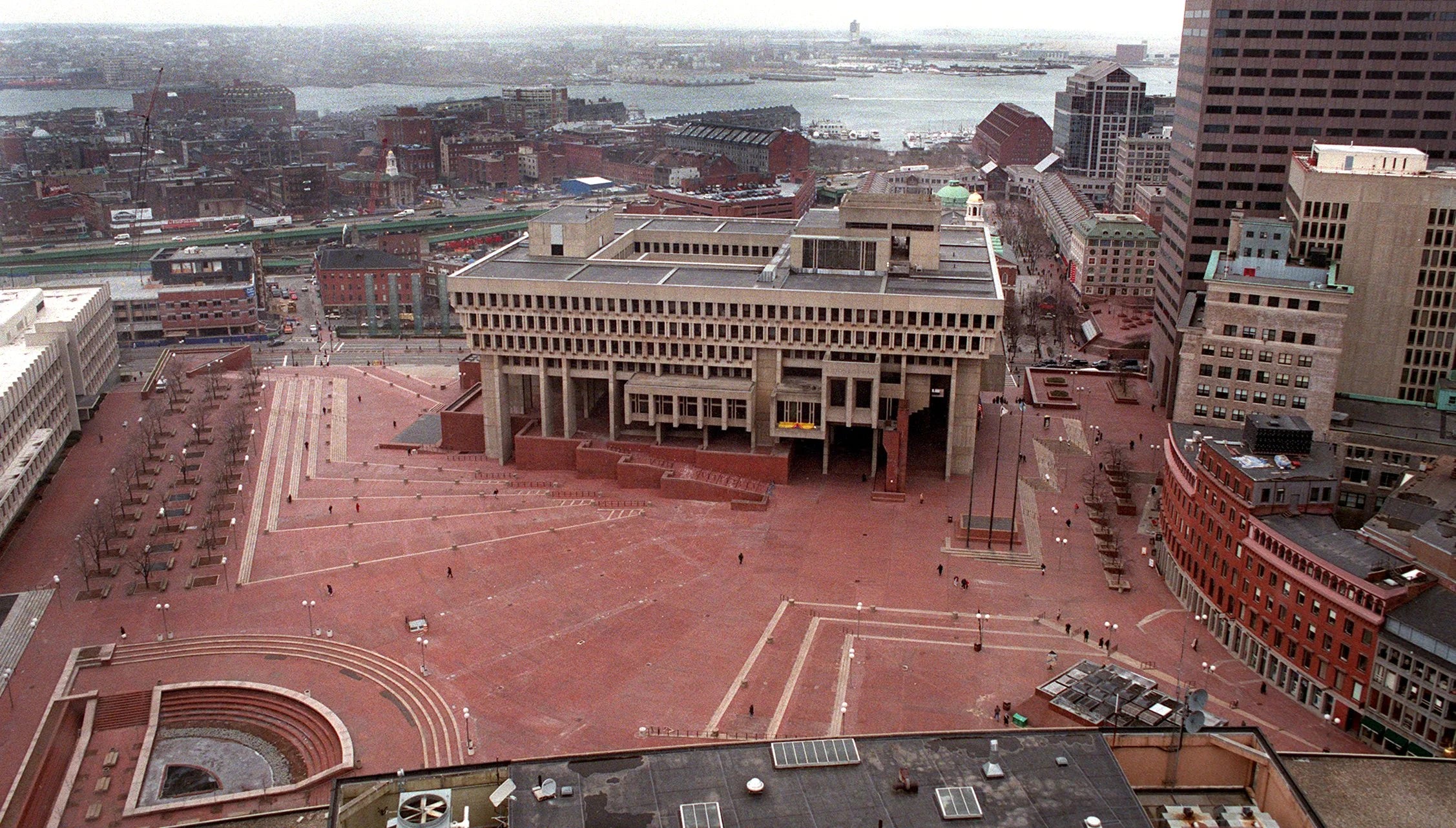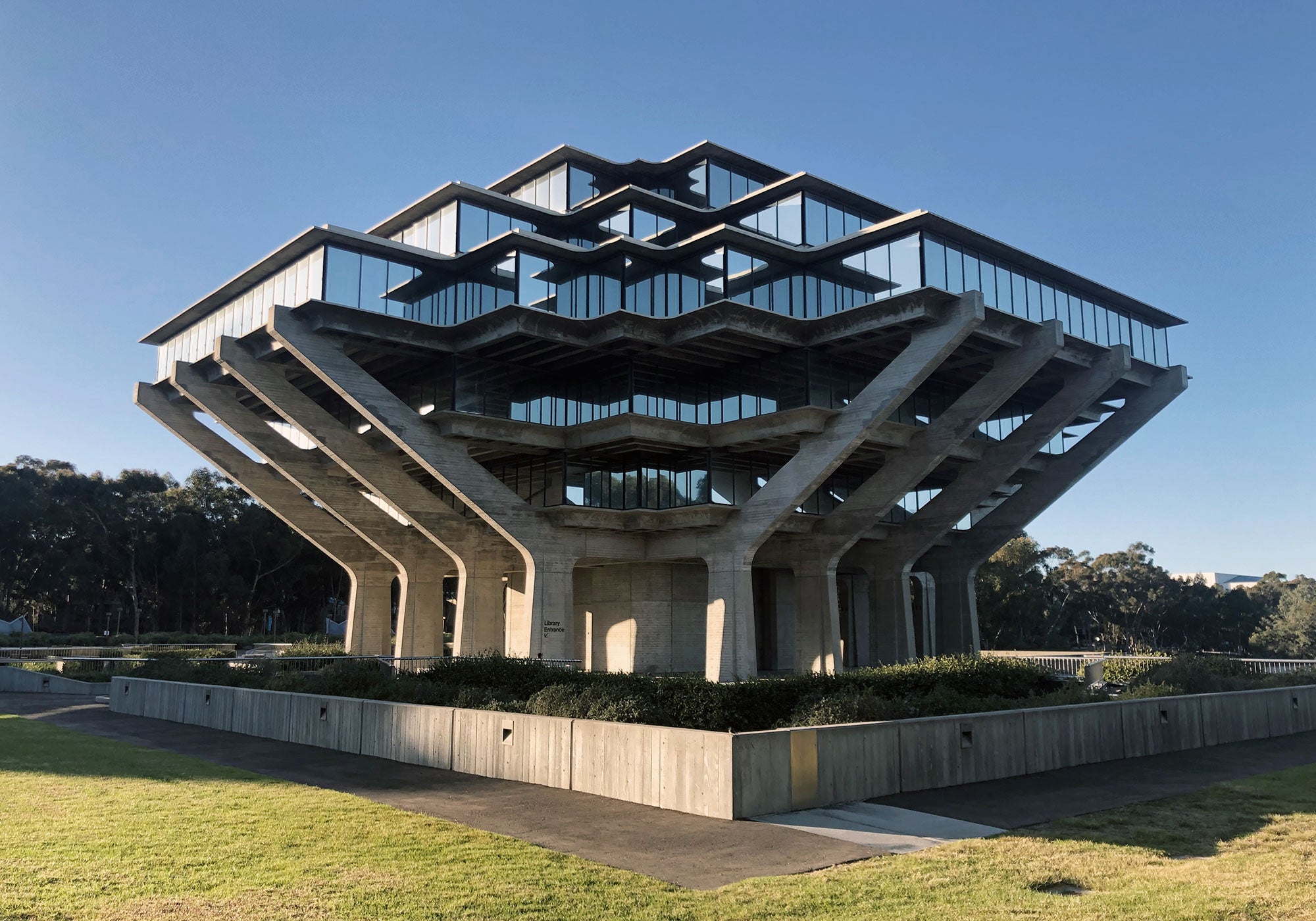
The brutalist movement, which emerged in the middle of the 20th century, emerges as a unique architectural expression, challenging aesthetic conventions and proposing a raw and functional approach to design. This article explores the resilience of Brutalism, examining its fundamental characteristics, iconic works and persistent influence on contemporary architecture.
Unlike conventional architectural styles, brutalism stood out for the unfinished appearance of buildings, the bold use of materials such as concrete, brick and glass, and the emphasis on functionality over aesthetics. Originating in a context of economic and social demands, brutalism initially divided opinions, but its influence transcended decades and borders. By delving into the essence of Brutalism, this article seeks to understand its historical role, but also highlight its ongoing influence and relevance in the contemporary architectural landscape.

How did the brutalism movement emerge? What is the history of the movement?
The brutalist movement in architecture had post-World War II origins, during the 1950s to 1970s. It emerged as an extension of the modernist movement and was characterized by simple, massive structures and the prominent use of exposed concrete. The term "brutalism" originates from the French word "béton brut," which means "raw concrete" or "unworked concrete."
The circumstances of the time influenced the brutalist aesthetic. After World War II, there was a demand for quick and efficient reconstruction, and materials were often in short supply. Brutalism reflected this reality by using materials such as concrete in a raw and unworked way, highlighting the functionality and structure of buildings instead of focusing on aesthetic aspects.
Early examples of brutalism include the Secondary School in Hunstanton, Norfolk, England, designed by Peter and Alison Smithson in 1954. Other important architects associated with the movement include Le Corbusier, Ernő Goldfinger, Louis Kahn and Alvar Aalto. Brutalism gained prominence in many parts of the world, including Britain, France, Germany, the United States, Canada and Australia.
The 1960s were especially notable for brutalism, with the emergence of iconic works such as Habitat 67 in Montreal, designed by architect Moshe Safdie, and the Escola Paulista in Brazil, led by João Vilanova Artigas. However, the style began to decline in the 1970s due to criticism and changes in architectural preferences.
Brutalism is characterized by several distinct characteristics, including the unfinished appearance of buildings, the use of heavy materials such as concrete, brick, steel and glass, straight lines and geometric shapes, aesthetic contrast with styles considered more traditional, such as neoclassical, and the emphasis on functionality and aversion to superfluous details.
Despite criticism and initial decline, brutalism has experienced a resurgence of interest in recent decades. Many of the ancient Brutalist works have become architectural landmarks, and the style has attracted the attention of enthusiasts and contemporary designers. The movement left a lasting legacy, challenging established architectural norms and continuing to inspire debates about aesthetics and function in construction.

What are the characteristics of the brutalism movement?
Unfinished Appearance: Brutalist buildings often exhibit an unfinished, textured appearance. Concrete is often left in its natural form without additional coatings, and surfaces can have a rough, expressive quality.
Use of Heavy Materials: Concrete is the dominant material in brutalism, and its use is prominent in many brutalist buildings. In addition to concrete, other materials such as brick, steel, glass and wood can be used.
Functional Character: Brutalism values the functionality of buildings. Form follows function, and the structure is often exposed, highlighting honesty in expressing the building's utility.
Prevalence of Straight Lines and Geometric Shapes: The brutalist movement tends to feature straight lines and simple geometric shapes. Massive blocks and volumes are common, giving an imposing and robust aesthetic.
Small Windows and Openings: Openings in Brutalist buildings, such as windows, are often small relative to the overall size of the structure. This creates a feeling of solidity and monumentality.
Aesthetic Contrast: Brutalism often stands out for its aesthetic contrast with styles considered more traditional or ornate, such as neoclassical. The emphasis is on form and function, as opposed to decorative elements.
Practicality and Aversion to Superfluous Details: The brutalist movement avoids superfluous ornamental details. Each building element is designed with a functional and practical purpose, reflecting a minimalist approach.
Use of Resistant and Cheap Resources: Brutalism often makes use of robust and affordable materials, such as concrete, which is durable and relatively economical.
Presence of Suspended Structures: Some brutalist buildings incorporate suspended architectural elements, such as exposed beams, giving a feeling of weight and lightness at the same time.
Grandeur of the Constructions: Many brutalist works are marked by their imposing and grand scale. They often stand out in the urban environment due to their dominant visual presence.

What are the most famous works of brutalism?
Habitat 67 (1967) - Montreal, Canada by Architect Moshe Safdie: Habitat 67 is a housing complex made up of blocks of apartments stacked irregularly, creating a unique and iconic structure.
Escola Paulista de Arquitetura (1961-1972) - São Paulo, Brazil by Architects João Vilanova Artigas and others: The Escola Paulista de Arquitetura is a significant example of brutalism in Brazil. It seeks to value the structure, technique and application of reinforced concrete.
Boston City Hall (1968) - Boston, USA by Architects Kallmann McKinnell & Knowles, Campbell, Aldrich & Nulty: Boston City Hall is known for its angular, brutalist architecture. It is an imposing and polarizing structure, considered by some as an example of technical quality and by others as an aesthetic disaster.
Housing Unit (Cité Radieuse) (1947-1952) - Marseille, France by Architect Le Corbusier: The Housing Unit in Marseille is often considered a precursor to brutalism. Designed by renowned architect Le Corbusier, this collective housing features raw elements and innovative forms.
Geisel Library (1970) - San Diego, USA by Architect William Pereira: The Geisel Library, located at the University of California, is a stunning example of brutalism, with its distinctive concrete tower and robust architectural lines.
Trellick Tower (1972) - London, United Kingdom by Architect Ernő Goldfinger: Trellick Tower is a residential tower in London, known for its imposing appearance and brutalist style. It has become an architectural landmark in the city.
Banco de Guatemala (1966) - Guatemala City, Guatemala by Architects José Montes Córdova and Raúl Minondo: The Banco de Guatemala is an example of brutalism in Central America, featuring solid and expressive architectural elements.
Mariano Moreno National Library (1961) - Buenos Aires, Argentina by Architect Clorindo Testa: This library in Buenos Aires is known for its distinctive geometric shapes and expressive use of concrete, representing brutalism in South America.
MASP - São Paulo Museum of Art (1968) - São Paulo, Brazil from the Architect: Lina Bo Bardi: MASP, designed by Lina Bo Bardi, is a brutalist icon in Brazil. Its structure suspended by glass pillars is a striking feature.
Faculty of Architecture and Urbanism at USP (1969) - São Paulo, Brazil by Architects João Vilanova Artigas and Carlos Cascaldi: This faculty is part of the Brazilian brutalist movement and reflects the emphasis on structure and technique, characteristics of the style.

What was the influence of brutalism today?
Brutalism, an architectural movement that flourished from the 1950s to the 1970s, continues to exert a significant influence on contemporary architecture. Despite initially being met with polarization and criticism, brutalism has re-emerged as a relevant force, shaping today's architectural approach in many ways.
One of the areas in which brutalism leaves its mark is in the resurgence of interest in its distinctive features. The movement, known for its unfinished appearance, bold use of materials like concrete and focus on functionality, has won over a new generation of architects, designers and enthusiasts.
Brutalism also directly influenced contemporary interior design. Elements such as simple lines, geometric shapes, and the expressive use of concrete have been incorporated into furniture, decorative objects and even modern architectural projects. This influence is evident in the tendency to explore brutal textures and raw materials in the design of interior spaces.
Brutalism's emphasis on honesty of materials and exposure of structure has had a lasting impact on contemporary architecture. The candid approach to materials like concrete and steel inspires a renewed appreciation for authenticity and unrefined aesthetics. This approach aligns with the growing search for sustainable and durable architectural solutions.
Brutalism also features prominently in the preservation and reappropriation of historic buildings. Many Brutalist structures, initially considered uninteresting or even ugly, are being reevaluated and transformed into cultural, residential and commercial spaces. This trend reflects a growing appreciation of the Brutalist architectural legacy.
Furthermore, the unique aesthetic of brutalism is often explored in contemporary art and photography. The grandeur, textures and geometric shapes of brutalist buildings serve as inspiring themes for visual artists and photographers, contributing to the dissemination of brutalist aesthetics in contemporary culture.
The influence of brutalism today transcends past decades, leaving an indelible mark on architectural approach, interior design, sustainability and aesthetic appreciation. The resurgence of interest in brutalism is a testament to its resilience and the ability of a challenging architectural movement to remain relevant and inspiring over time.

